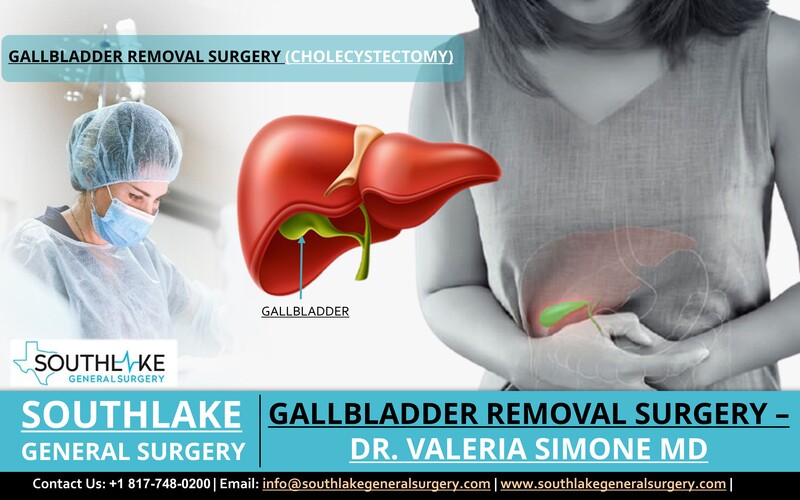An individual may require gallbladder removal surgery also known as Cholecystectomy, when, other medical treatments don’t ease the pain and inflammation caused by gallstones and correlated issues.
Gallbladder surgery is the most common and safest surgical procedure recommended to patients. Although, it has some possible risks and side effects like any other surgical procedure.
Why do you need Gallbladder Removal Surgery?
The gallbladder is a small pear-shaped organ, it is located underneath the liver on the upper right section of the abdomen. It stores and releases bile to break down fats.
If your liver produces excess pigment also known as bilirubin in the bile or a higher amount of cholesterol, then you may experience gallbladder problems, that may include:
- Stones in the bile duct
- gallstones
- acute or chronic gallbladder inflammation because of gallstones
If you experience any of these symptoms, immediately contact your doctor rather than ignore them.
Your doctor may suggest gallbladder surgery to treat the symptoms. However, an individual can live a healthy life without a gallbladder.
Gallbladder Surgery Procedure
Gallbladder removal surgery is a standard and low-risk surgical method to remove gallstones. In this procedure your doctor may suggest any one of these surgical procedures:
- Laparoscopic Gallbladder Removal Surgery at Southlake General Surgery. (or Laparoscopic Cholecystectomy)
- Open Surgery
Laparoscopic gallbladder surgery is a minimally invasive method to remove the gallbladder. The surgeon makes 3-4 small incisions on the abdomen and inserts a small camera fitted on a tube called a laparoscope, to view inside the abdomen. Once the gallbladder is removed, the doctor closes the incision with sutures.
This procedure is less painful and recovery time after gallbladder surgery is also reduced.
In a few cases, the doctor may advise for open surgery. In this procedure, the doctor makes one large incision on the abdomen to remove the gallbladder.
Recovery time after gallbladder surgery
Recovery time after the gallbladder removal surgery differs because of the type of surgical procedure.
After the gallbladder surgery, the patient will receive detailed instructions from the medical team on – How you can take care of the wound and avoid infection. Instruction will also advise you to avoid taking shower for at least 1 or 2 days after surgery.
Recovery time after laparoscopic gallbladder surgery
The recovery process after laparoscopic surgery reduces and many patients get discharged from the hospital the same day after the surgery. But it is mandatory to have a friend or a family member at the time of discharge to drive you home safely.
After laparoscopic surgery, you need to take adequate rest for about 2 weeks to resume your daily activities.
Recovery time after open surgery
Individuals who had open gallbladder removal surgery take slightly longer to heal and recover. You might need to stay in the hospital for about 4-5 days after gallbladder surgery. At the time of discharge from the hospital, you need to have a friend or a family member drive you home.
After open surgery, it would take about 6-8 weeks to completely recover from the surgery and resume normal activities.
Complication and Side effects of the Gallbladder Surgery
Gallbladder removal surgery is generally the safest procedure, however, there are some possible complications and side effects, that include:
- infection after surgery.
- Side effects of anesthesia after surgery.
- Blood clots
- Bleeding from the surgical site
- Heart problems
- pneumonia
- bile leakage
- swelling
- damage to a bile duct, intestines, bowel, or blood vessels due to surgery
There is another potential risk of Post Cholecystectomy Syndrome (PCS) that happens because of gallstones left in the bile duct. It may also happen if bile leaks into the stomach. Symptoms of PCS are the same as gallstones that include abdominal pain, acid reflux, and diarrhea.
If individual experiences any of the listed symptoms after gallstones surgery, please contact your doctor.
- Abdominal Pain
- Diarrhea
- Change in skin colour to yellowish (jaundice)
- Pain that gets worse and doesn’t seem to get better over time
- Nausea and vomiting
- Difficulty in passing gas and bowel movements
An individual may require endoscopic retrograde cholangiopancreatography (ERCP) procedure if the surgeon couldn’t remove the gallstones promptly during the surgery. In this procedure, a tiny camera is inserted from your mouth to the small intestine where the bile duct embeds. The doctor look for stone in the duct and try to remove it. This procedure also helps in fixing problems like postoperative bile leakage. It can be fixed through a repeat surgery or interventional radiology.
Diet After Gallbladder Surgery
Your doctor will share a diet plan with you after gallbladder surgery. This includes a liquid diet for a couple of days after diet and gradually you can add other food items into your meals.
Diet after gallbladder surgery plays an important role in your recovery process. It is always recommended to adhere to your doctor’s instructions. A diet plan with fruits and simple vegetables such as cabbage, cauliflower, whole grains, seeds, and nuts is always beneficial. After gallbladder removal surgery, avoid taking meals that include spicy, greasy, sweet, or fatty foods.
Takeaway
Gallbladder removal surgery at Southlake General Surgery, Texas, is the safest surgical procedure. Just like all other surgical procedures it also includes some possible risks and complications.
After surgery, it is always recommended to follow your doctor’s instructions for faster recovery. In case, you notice any symptoms such as infection or other complications, immediately contact your doctor.
Appointment
For more information of gallbladder removal surgery also known as Cholecystectomy. You can contact our healthcare experts today at +1(817) 748-0200. You can also make an online appointment with us.

